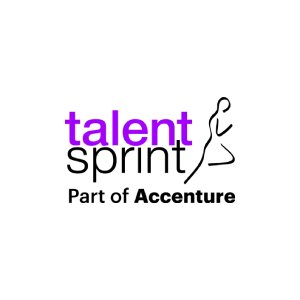Data Science Life Cycle Explained: From Raw Data to Real Results

Think of the Data Science Life Cycle as a detective’s path: gathering clues (data), asking the right questions, connecting the dots with logic (models), and finally solving the case with insights. From startups predicting customer churn to governments optimizing urban traffic, data science is the engine powering smarter choices.
This article will guide you through every stage of the data science lifecycle, starting from the original business understanding to final deployment. You'll learn ground approaches to tackle challenges at each phase and find ways to extract true value from data.
What is Data Science?
Data science is the process of using data to gain insight, solve problems, and make informed decisions. Data science combines principles from mathematics, statistics, artificial intelligence, and computer engineering. These help analyse large amounts of data and extract business insights.
Also read: Understanding Data Science: The What, Why, and How?
What is the Need for Data Science?
Data science serves as a systematic method for handling massive volumes of information.
Handling unstructured and large-scale data
Data science equips us with tools to process complex mixtures of numbers, texts, and signals that don't fit into conventional storage formats. This capability is vital since organisations generate millions of terabytes of information daily. Most of this data needs sophisticated processing to yield useful insights.
Driving business value through predictive insights
Raw information transforms into business intelligence that shapes strategic decisions through data science. Organisations that rely heavily on data are three times more likely to experience significant improvements in their decision-making compared to those that are less data-dependent. Businesses can forecast trends, anticipate customer behavior, and identify potential risks through predictive analytics before they materialize.
What is the Data Science Lifecycle?
The data science lifecycle provides a structured approach to transforming raw data into actionable insights. A well-laid-out framework guides this process through six basic stages that help professionals tackle complex data challenges.
1. Business understanding
The lifecycle begins with a thorough understanding of what organisations aim to achieve. Data scientists need to state the problem at this foundational stage clearly. They determine resources, assess risks, define success criteria, and set project timelines. A clear business objective makes the difference between success and failure in any data science project. These initial insights shape all future analytical decisions.
2. Data understanding and exploration
Teams collect and analyze available datasets after defining business goals. They examine data formats, create summary statistics, build visualizations, and verify data quality and completeness through profiling. Analysts use exploratory data analysis (EDA) to find patterns, outliers, and relationships in datasets without any assumptions. This discovery process bridges the gap between raw data and useful insights.
3. Data preparation and feature engineering
Data preparation accounts for up to 80% of project time, transforming raw information into something useful. Teams clean messy data, handle missing values, remove duplicates, and resolve inconsistencies during this vital stage. Feature engineering turns raw data into features by selecting, manipulating, and transforming it. This creates new variables that weren't in the original training set and makes models more accurate.
4. Modelling and algorithm selection
Teams select suitable algorithms based on their specific needs (classification, regression, or clustering) once the data is ready. They develop training and testing datasets and fine-tune hyperparameters for the best results. The modeling phase usually takes less time than preparation, although many consider it the heart of data analysis.
5. Model evaluation and validation
Teams rigorously test various models to determine the best fit for their business objectives. They calculate performance metrics (accuracy, precision, recall, and F1 score) and employ validation techniques, such as cross-validation, to ensure models perform well with new data. Technical assessment focuses on accuracy, while business evaluation looks at the broader value.
6. Deployment and monitoring
Models go live in production environments during the final stage. Deployment can range from creating reports to building enterprise-wide systems. Teams track model performance continuously after deployment. They monitor for data drift and concept drift that may render models less effective over time. Performance tracking and alerts help organisations keep models running well and know when they need retraining.
Applying the Lifecycle: From Data to Results
Data scientists face their greatest challenge when they need to apply theoretical knowledge in real-world applications. Value generation from data takes centre stage in the entire process, not just model building. The most sophisticated algorithms will fail without proper execution.
How each stage contributes to the outcome
Your final results depend on each phase of the data science lifecycle. The business understanding phase aligns analysis with organisational objectives, helping to address real business problems rather than technical curiosities.
Models sit at the core of data analysis, transforming prepared inputs into desired outputs through selected algorithms. The evaluation process tests your solution against strict metrics to check deployment readiness.
Common challenges and how to overcome them
The data science lifecycle presents numerous obstacles despite its potential. Technical findings often create communication gaps when presented to business teams. Data scientists need to develop storytelling skills that enable non-technical stakeholders to understand complex models.
The choice of appropriate models needs a balance between accuracy and interpretability. A simple, explainable model often proves more valuable than a complex "black box" solution.
Importance of iteration and stakeholder input
The data science lifecycle operates in cycles rather than a linear progression. Success depends on the involvement of stakeholders throughout the process. Stakeholders help define problems, set realistic expectations, and share domain expertise.
Their constant involvement ensures solutions tackle real business needs instead of theoretical possibilities. Projects require a collaborative effort across teams, with data scientists, engineers, domain experts, and business stakeholders working together to create solutions that are both technically sound and practically valuable.
What is the Future of Data Science?
Data science is evolving rapidly as new technologies transform how professionals derive value from information. Several key trends will shape how the data science lifecycle adapts to business needs and technological capabilities.
The change towards automation and immediate analytics
AI-powered tools now handle repetitive tasks like data cleaning, preprocessing, and model building. This automation enables data scientists to focus on more strategic work instead of routine tasks. Traditional batch processing has given way to immediate analytics as companies see the value of instant insights.
Edge computing leads this transformation by moving data processing closer to where data originates. This enables analytics to work more effectively for autonomous vehicles and smart manufacturing. These technologies also create individual-specific experiences by providing automated responses based on instant insights.
Interdisciplinary collaboration and soft skills
The evolution of data science makes interdisciplinary skills increasingly important. Technical expertise remains vital, but communication skills are now of equal value. Data scientists must explain their findings to non-technical stakeholders and turn complex data into clear, actionable insights. Business knowledge helps professionals connect technical possibilities with practical solutions that drive growth and breakthroughs.
Career outlook and evolving job roles
Data science roles now extend beyond traditional boundaries. Junior positions focus on technical skills, while mid-level roles combine complex analytics with a deeper understanding of business. Senior data scientists must think strategically to drive organisational change.
Conclusion
Data science has reshaped how organisations extract value from their big data resources.
A clear business understanding creates the base for all future analysis. Even the most sophisticated models will fail without this clarity to deliver meaningful results.
Data preparation has a significant impact on the quality of your outcomes, although it requires considerable time. Models can only perform as well as their underlying data.
The data science future looks bright. Automation tools will continue to streamline repetitive tasks. Up-to-the-minute data analysis delivers insights faster than before. Furthermore, the growing emphasis on interdisciplinary skills indicates that technical expertise alone is insufficient in this rapidly evolving field.
As we know, each stage of the lifecycle still faces challenges, and building reliable data governance practices and communication skills becomes as vital as mastering algorithmic skills.
Data science courses can help you gain the knowledge and skills necessary to rise as a professional and work effectively with large-scale data sets.
Because the career outlook field shines exceptionally bright.
Hence, the data science life cycle is a story of transformation. From the chaotic hum of raw data to the clarity of real-world impact, every stage plays its part like instruments in a symphony, bringing harmony to business, science, and everyday life.
Frequently Asked Questions
Q1. What are the key stages of the data science lifecycle?
The data science lifecycle consists of six main stages: business understanding, data understanding and exploration, data preparation and feature engineering, modelling and algorithm selection, model evaluation and validation, and deployment and monitoring.
Q2. How does data science differ from traditional analytics?
Data science goes beyond traditional analytics by focusing on predicting future outcomes rather than just analysing historical data. It uses more sophisticated methods to handle both structured and unstructured data, employs advanced programming languages, and creates predictive models and algorithms.
Q3. What skills are becoming increasingly important for data scientists?
While technical expertise remains crucial, communication skills and business acumen are becoming equally valuable. Data scientists must effectively present their findings to non-technical stakeholders, translate complex data into actionable insights, and understand how their work aligns with business objectives.

TalentSprint
TalentSprint is a leading deep-tech education company. It partners with esteemed academic institutions and global corporations to offer advanced learning programs in deep-tech, management, and emerging technologies. Known for its high-impact programs co-created with think tanks and experts, TalentSprint blends academic expertise with practical industry experience.



